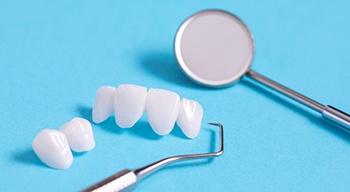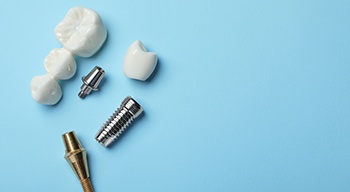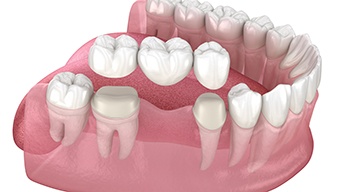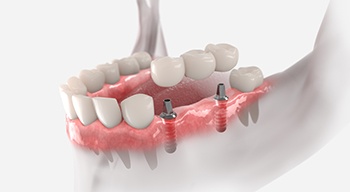Dental Bridges – Somerville, NJ
Restore Missing Teeth and Prevent Future Issues

No one should have to go through life with missing teeth – even small gaps in your grin can have surprisingly large consequences! Not only will your ability to eat be diminished and your speech patterns disrupted, but your self-esteem will suffer until those teeth are replaced. And there are few better means of replacing lost teeth in Somerville than a dental bridge! To learn more about how a dental bridge can easily restore your missing teeth and prevent future dental issues from popping up, continue reading below or give our practice a call today.
Why Choose Somerset Dental Arts for Dental Bridges?
- Experienced Dentist with Keen Eye for Detail
- Beautiful, Natural-Looking Materials Used
- Insurance Accepted and Flexible Financing Available
What is a Dental Bridge?

A dental bridge is a type of restoration used to fully replace one or multiple missing teeth. It consists of a row of lifelike replacement teeth, known as “pontics,” that are anchored in place using either dental crowns or strategically placed dental implants. Bridges are designed to look and feel as closely to your natural teeth as possible, and they can also provide patients with vastly improved oral functionality.
Types of Dental Bridges

When you come in for your consultation, our team will inspect your smile, discuss your smile goals with you, and determine which type of bridge is best suited for your needs. We’re proud to offer two different types of bridges here in our Somerville office:
Traditional Dental Bridge

Traditional bridges are often considered when a patient is missing just one, two, or sometimes three teeth in a row – keep in mind that longer bridges usually require more support, so the teeth adjacent to the gap must be healthy enough to support the bridge. The replacement teeth can be situated between two dental crowns that are placed on the teeth on both sides of the gap. This requires the teeth adjacent to the gap to be healthy enough to support dental crowns.
Implant Bridge

Implant bridges are slightly different than their traditional counterparts; rather than relying on crowns placed on existing teeth, they’re supported with dental implant posts that are surgically placed beneath the gumline. This means that they’re able to provide a sturdier foundation for the bridge, as well as replace the roots of the missing teeth – which is something a traditional bridge cannot do, and it ultimately leads to vastly improved oral health.
The Benefits of Getting a Dental Bridge

When you receive a dental bridge, you aren’t just replacing your lost teeth; you’re also vastly improving your quality of life! Consider these benefits of getting a dental bridge:
- Bridges are based on your specific dental needs; whether you’re missing one, two, or a few teeth in a row, these restorations are highly customizable and can easily be made to match your existing teeth.
- Bridges allow patients to bite and chew with ease, in addition to speaking and enunciating clearly.
- You don’t have to change up your oral hygiene regimen when you receive a dental bridge; you can simply brush and floss it as usual, and under ideal care, you can expect it to last for 10+ years.
- When you lose teeth, your remaining ones can sometimes begin to move toward the gaps in your smile, eventually falling out themselves. Bridges can prevent this “dental drift.”
